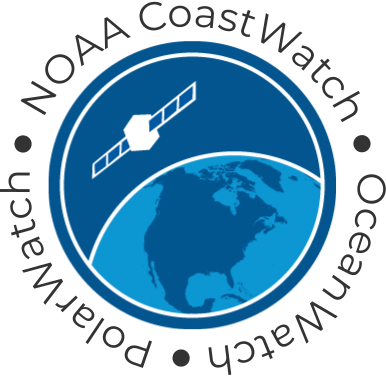Near-real-time (NRT) global daily chlorophyll-a (Chl-a) anomaly products that can be used to detect and identify algae blooms from satellite ocean color measurements such as those from the Visible Infrared Imaging Radiometer Suite (VIIRS) onboard the Suomi National Polar-orbiting Partnership (SNPP) and NOAA-20. Specifically, the production of the two Chl-a anomaly products, one for the Chl-a anomaly in difference and another for the Chl-a anomaly ratio (actually, the proportional difference or relative difference; product is labelled "pdif" in the files) compared to the 61-day Chl-a median value from the previous time period (as a Chl-a reference), has been implemented in the daily global NRT satellite data processing. These two Chl-a anomaly products represent the global ocean and coastal/inland water Chl-a abnormal condition for a given location and can provide more complete characteristics for the daily phytoplankton (or algae) biomass status by comparing to the normal condition.
Data Access
Product Overview

Product Details
| Short Names |
NOAA VIIRS Chlorophyll Anomaly
|
|---|---|
| Product DOI | |
| Temporal Coverage |
Daily; computed by difference or ratio of a 61 day mean |
| Product Families |
Ocean Color
|
| Measurements |
Chlorophyll-a Anomaly Difference
Chlorophyll-a Anomaly Ratio
|
| Processing Levels |
Level 3
|
| Latency Groups |
24+ hours (Delayed)
|
| Latency Details |
48 hours |
| Spatial Resolution Groups |
2km+
|
| Spatial Resolution Details |
2km (2.3163 km or 0.02°) |
| Data Providers |
NOAA
|
Spatial Coverage
Global
| Description |
180W - 180E |
|---|
Processing Algorithms
MSL12
| Description |
Multi-Sensor Level-1 to Level-2 (MSL12) Ocean Color Data Processing System |
|---|
Platforms
Documentation
Wang M., L. Jiang, K. Mikelsons, X. Liu, Satellite-derived global chlorophyll-a anomaly products, International Journal of Applied Earth Observation and Geoinformation, Volume 97, 2021, 102288, https://doi.org/10.1016/j.jag.2020.102288.
